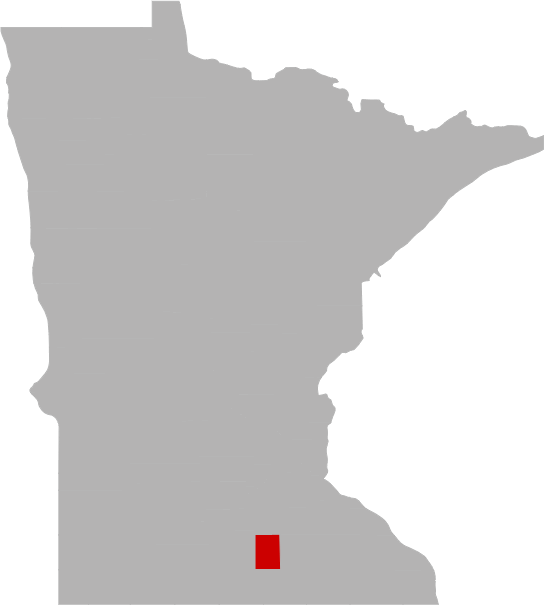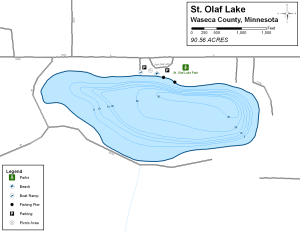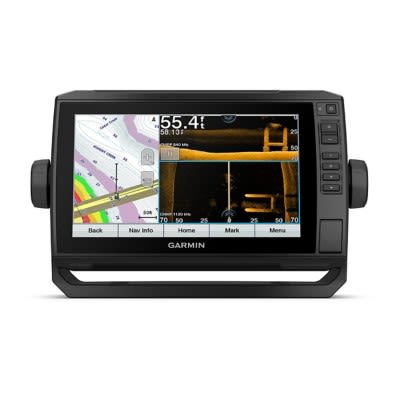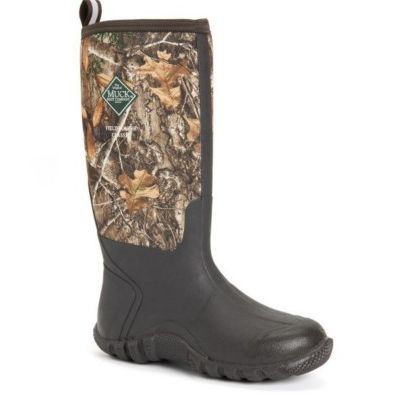Today's Best Fishing Times
Get the best fishing times for St. Olaf Lake with Lake-Link's Fishing Forecast. SEE MORE


Share Your Catch & Win!
Frequently Asked Questions About St. Olaf Lake, MN
- How big is St. Olaf Lake?
- How deep is St. Olaf Lake?
- What kind of fish can you catch in St. Olaf Lake?
- What are the closest cities to St. Olaf Lake?
- Are there places to stay in the St. Olaf Lake area?
- Are there topographical lake maps available St. Olaf Lake?
- Are there boat launches on St. Olaf Lake?
- Are there places to eat and drink near St. Olaf Lake?
- What is the average air temp for St. Olaf Lake?
- Are there any state parks near St. Olaf Lake?
How big is St. Olaf Lake?
How deep is St. Olaf Lake?
What kind of fish can you catch in St. Olaf Lake?
Other fish species in the lake include Bluntnose Minnow, Golden Shiner, Green Sunfish, Hybrid Sunfish, Johnny Darter and White Sucker.
What are the closest cities to St. Olaf Lake?
Are there places to stay in the St. Olaf Lake area?
More Lodging Options
Are there topographical lake maps available St. Olaf Lake?
Are there boat launches on St. Olaf Lake?
Are there places to eat and drink near St. Olaf Lake?
Explore the St. Olaf Lake area in a RV
Are you looking for an adventurous vacation option that won't break the bank? Look no further than renting an RV! Contrary to popular belief, the process is much simpler than you might imagine. With just a few easy steps, you'll soon be experiencing the ultimate freedom and convenience of exploring the open road in your very own recreational vehicle. And the best part? RV travel can save you up to 60% compared to other types of vacations! With the money you'll save, you'll be able to travel even more and create unforgettable memories along the way. So why wait? Start planning your next adventure today with an RV rental. Learn more about renting a RV.

2020 Lightning Aluminum Enclosed 5-place Snowmobile Trailer
Lakeville, MN



History & Status of the Fishery
Introduction
St Olaf Lake is a small (91 acre) lake located approximately 3.5 miles east of the town of New Richland in Waseca County. The county owned public access is located on the north shore off of County Highway 8. It has a maximum depth of 33 feet, with approximately 55% of the lake classified as littoral area. St. Olaf Lake is primarily managed for Bluegill, Largemouth Bass, and Northern Pike and secondarily for Black and White Crappie. The management plan calls for stocking 25,000 Northern Pike fry annually into the connected wetland near the public access. A special regulation protecting Northern Pike under 30 inches from harvest has been in place since 1998. St Olaf Lake is one of 23 lakes statewide included in the Sentinel Lakes in a Changing Environment (SLICE) program which aims to capture long term changes in biological, physical, and chemical characteristics. It was surveyed the week of June 20, 2016 as part of a regular monitoring program conducted by the Minnesota DNR. This survey was intended to assess the fish community by deploying 3 gill nets and 9 trap nets, as well as recording water quality parameters.
?
Bluegill
A total of 516 Bluegills were sampled with trap nets for a catch rate of 57.3/net, which consistent with historical catch rates. Since 1984, catch rates have varied from 33.3/net in 1996 to 213.3/net in 1998 with an average of 95.5/net. Lengths ranged from 3.0 to 8.2 inches with an average of 6.6 inches. An additional 4 Bluegills ranging from 6.5 to 8.0 inches were sampled with gill nets. Fish from both gears ranged from 1 to 10 years old with 10 year-classes present. On average, fish did not exceed 6.0 inches until 4 years old, indicating moderate growth relative to other area lakes. Bluegills continued to be an important part of the St Olaf fishery in 2016, with many quality size fish available to anglers.
Largemouth Bass
A total of 99 Largemouth Bass were sampled with boat electrofishing for a catch rate of 106.4/hour. This represented the highest catch rate ever recorded with boat electrofishing on St Olaf Lake. Since 2000, catch rates have varied from 22.0/hour in 2000 to 106.4/hour in 2016 with an average of 58.2/hour. Lengths ranged from 3.2 to 20.0 inches with an average of 10.4 inches. To summarize, numbers and sizes were of high quality in 2016 and management goals were easily met.
Northern Pike
Northern Pike were the most commonly sampled species with gill nets with a total of 14 fish for a catch rate of 4.7/net. Since 1984, catch rates have varied from 0.3/net in 1990 to 9.7/net in 2002 with an average of 4.0/net. Since the implementation of the special regulation in 1998, catch rates have averaged 6.1/net, which meets our management goal of 6.0/net. Recent catch rates of 1.3/net in 2014 and 4.7/net in 2016 are concerning however and may indicate a problem with recruitment or noncompliance with the regulation. Lengths in 2016 ranged from 17.9 to 37.8 inches with an average of 26.5 inches. Six additional Northern Pike ranging from 16.7 to 20.9 inches were sampled with trap nets. Fish from both gears ranged from 1 to 10 years old with 5 year-classes present. The gaps in age groups points to a lack of recruitment during those years. On average, fish reached 21.0 inches by 2 years old, indicating fast growth relative to other area lakes. Overall, Northern Pike numbers have declined below the management goal but favorable lengths and growth provide anglers a high quality opportunity.
Crappie Species
Both Black and White Crappies inhabit St Olaf Lake. To tell them apart, you can look at the patterns on the sides of the fish as well as count the spines on the dorsal fin (top fin on the back). Black Crappies tend to be more mottled in appearance with black blotches and White Crappies tend to have mottling that forms vertical bars. When counting the hard spines on the dorsal fin, Black Crappies usually have 7-8 and White Crappies usually have just 5-6. Black Crappies were sampled with trap nets at a rate of 6.7/net. White crappies were sampled with trap nets at a rate of 1.0/net, which indicated moderate to high numbers were present relative to similar lakes. Both species have declined in recent surveys. From 2002 to 2010, trap net catch rates for both species exceeded 16/net. Since 2010, catch rates have fallen to an average of 6.5/net for Black Crappie and 1.0/net for White Crappie. Lengths ranged from 4.1 to 13.2 inches with an average of 7.1 inches for Black Crappies and from 3.9 to 12.1 inches with an average of 7.1 inches for White Crappies. Black Crappies from both gears ranged from 1 to 11 years old with 9 year-classes present. On average, Black Crappies reached 8.0 inches by 5 years old, indicating moderate growth relative to other area lakes. Despite the recent decline, the collective trap net catch rate of both species exceeds the management goal of 5.0/net and size structure was favorable to anglers.
Yellow Perch
A single 7.8 inch Yellow Perch was sampled with gill nets for a catch rate of 0.3/net, which was the second lowest on record. Since 1984, catch rates have been erratic varying from 0.0/net in 1996 to 33.3/net in 2014 with an average of 8.0/net. The two highest catch rates in 1990 (13.5/net) and 2014 (33.3/net) coincided with the two lowest Northern Pike catch rates on record (0.3/net and 1.3/net, respectively). This relationship suggests a strong predator-prey influence on both species. When Yellow Perch were abundant, an increase in Northern Pike numbers followed and drove Yellow Perch numbers down and so on. This may also explain the recruitment gaps seen in the Northern Pike population. At times in the past Yellow Perch have likely been a part of the angler's creel but their real value was providing forage for the fast growing trophy Northern Pike population in St Olaf Lake.
Yellow Bullhead
Just 4 Yellow Bullheads total were sampled with gill and trap nets in 2016. Since 1996, Yellow Bullheads have been rare with gill net catch rates averaging 0.6/net. They do not play a major role in the lake's fish community.
Common Carp
Two Common Carp were sampled with trap nets for a catch rate of 0.2/net. Since 1984, catch rates have averaged just 0.2/net and have never exceeded 1.0/net. Although nonnative, the Common Carp population in St Olaf Lake has subsisted at an almost undetectable level and likely poses little threat to current fish management objectives.
Other Species
Other Species sampled in 2016 include Golden Shiner, Pumpkinseed, and hybrid sunfish.
Anglers can play an important role in maintaining or improving a fish population by practicing selective harvest. Selective harvest allows for the harvest of smaller fish for consumption, while encouraging the release of medium to large fish that may contribute to natural recruitment. This practice helps maintain balance in the fish community and provides anglers the opportunity to catch more and larger fish in the future. Additionally, smaller fish often taste better and have fewer contaminants than larger, older fish from the same water body.
Shoreline property owners also play an important role in the overall health of an aquatic ecosystem, including the fish population. Natural shorelines, including vegetation, woody debris, and bottom substrates, provide valuable habitat for fish and wildlife, help maintain water quality, and reduce bank erosion. By leaving natural shorelines unaltered or restoring them to natural conditions, shoreline property owners are doing their part to maintain or improve a healthy ecosystem in the lake and protect the resource for future generations.
-Sky Wigen, Fisheries Specialist
What is the average air temp for St. Olaf Lake?
Are there any state parks near St. Olaf Lake?
For more Minnesota State Park information see our State Park Guide.
More Nearby Lakes To Explore
There's more lake's to explore around St. Olaf Lake...| DISTANCE | ACRES | MAX DEPTH | |
| Beaver Lake | 3.5 mi | 98 | 27 ft |
| Geneva Lake | 10.4 mi | 1,884 | 3.5 ft |
| Clear Lake | 13.1 mi | 649 | 34 ft |
| Freeborn Lake | 13.3 mi | 2,034 | 6.7 ft |
| Loon Lake | 13.3 mi | 125 | 9 ft |
| Kohlmeier Lake | 14.3 mi | 34 | 14 ft |
| Fountain Lake | 16.5 mi | 521 | 14 ft |
| White Lake | 16.6 mi | 168 | 0 ft |
| Morin Lake | 17.8 mi | 21 | 7 ft |
| Pickeral Lake | 18.8 mi | 588 | 6 ft |


















